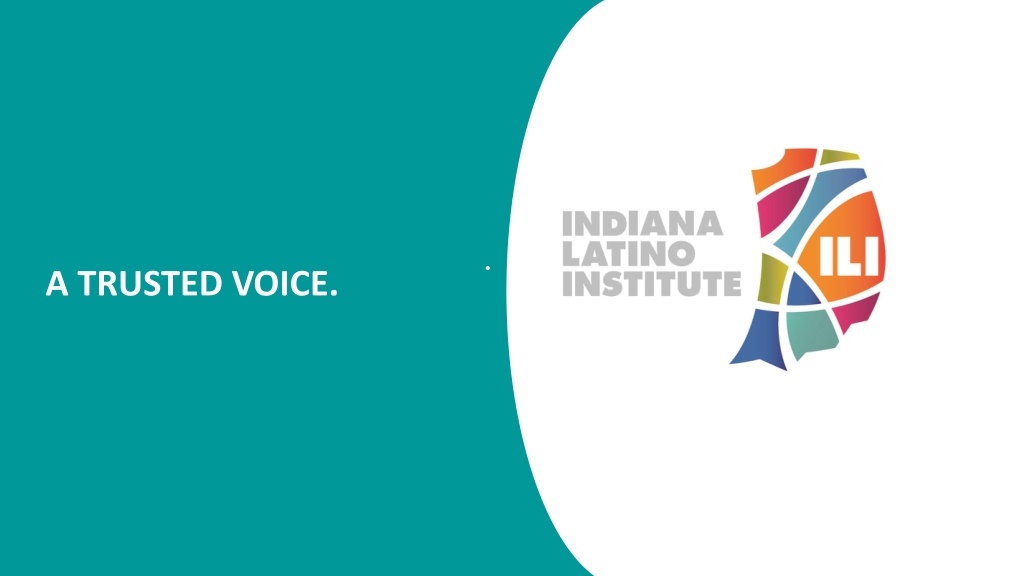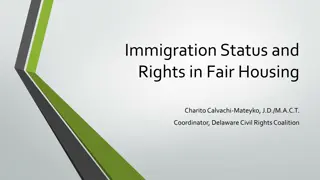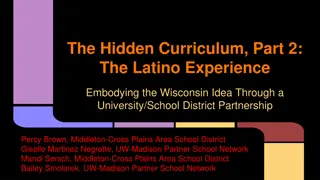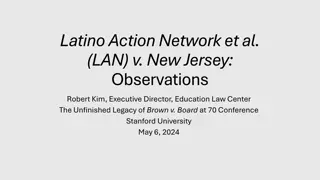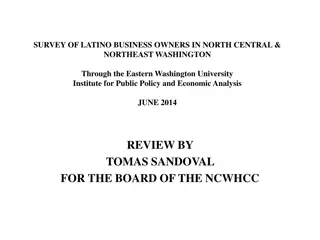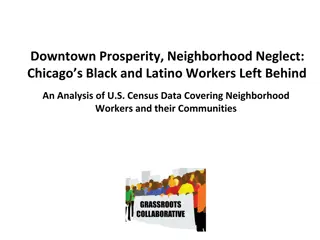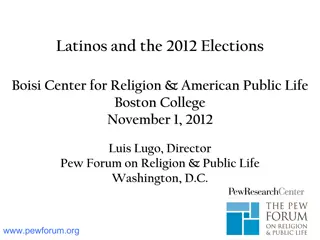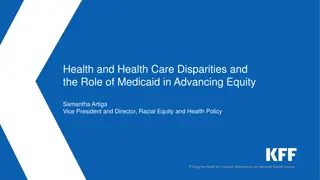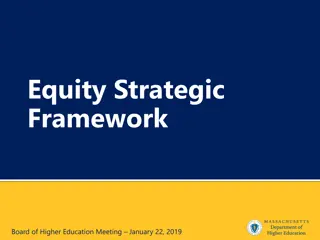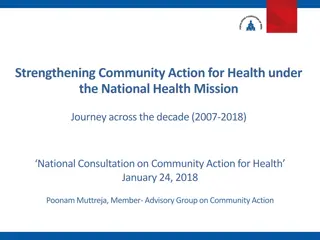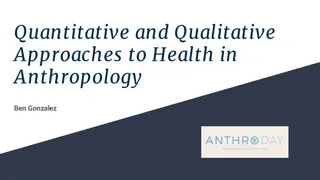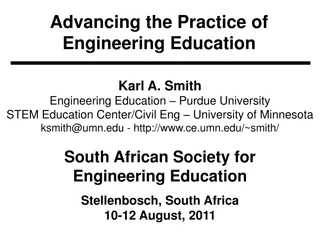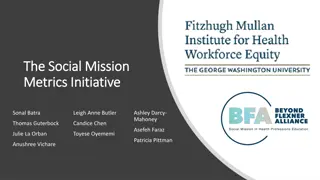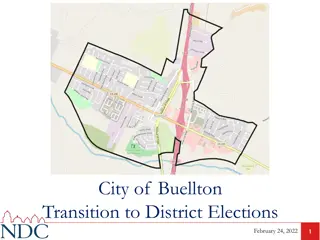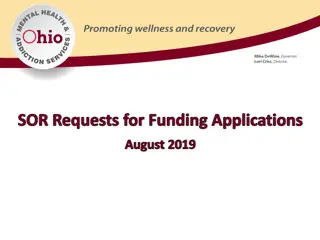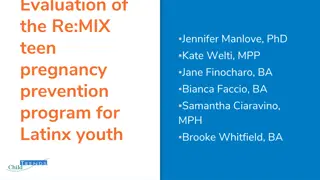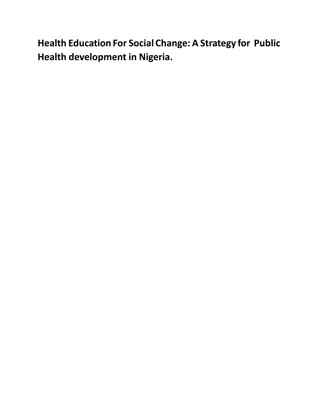Advancing Education and Health for Indiana's Latino Community
Indiana Latino Institute (ILI) is dedicated to improving health and advancing education for the Latino community in Indiana through advocacy, research, and innovative programs. They address obstacles faced by Latino students, such as immigration status, familial barriers, and lack of financial aid. ILI's education program offers resources like college access, scholarships, professional development, and internships to empower Latino students. They also focus on tobacco cessation and prevention efforts, aiming to reduce smoking rates among Latino youth. Federal statistics show disparities in degree attainment and graduation rates for Latino students compared to the overall population, highlighting the importance of ILI's mission.
Download Presentation

Please find below an Image/Link to download the presentation.
The content on the website is provided AS IS for your information and personal use only. It may not be sold, licensed, or shared on other websites without obtaining consent from the author. Download presentation by click this link. If you encounter any issues during the download, it is possible that the publisher has removed the file from their server.
E N D
Presentation Transcript
A TRUSTED VOICE.. A TRUSTED VOICE.
Agenda Introduction of ILI Federal Perspective Obstacles for Indiana Latino Students Immigration Status Familial Barriers Lack of Financial Aid and Scholarship availability K-12 and Higher Education- lack of resources
Our mission is to improve health and advance education for the Indiana Latino community through advocacy, research and innovative programs.
Our Education Program College Access Indiana Latino Education Summit College Preparation Workshops Case Management College Coaching Women Reaching Higher Peer to Peer Tutoring ILI Education Program Make education a priority; not an option Scholarships Professional Development Internships Job Fair Resume Writing Academic Scholarship Community Service Scholarship Paid Summer Internships For more information Contact us at:(317) 472-1055 or ddavis@indianalatino.com
Tobacco Cessation and Prevention Smoking rates in Latino middle students are nearly double that of African American and Caucasian youth High-schoolers have a higher rates of smoking Why?
United States K-12 Population: 22% is Latino Total Population: 17% is Latino Median Age: 27 for Latinos, compared to 42 for White non- Hispanics. Degree Attainment 20% of Latino adults (25 and older) had earned an associate degree or higher, compared to 36% of all adults. Graduation Rate 41% of Latino students graduated within 150% of program time for first-time, full-time freshmen, compared to 50% of all students. Degree Attainment for Latino Students, 2011- 2012: More than 30% 26 to 30% 21 to 25% 16 to 20% 15% or less Source: based on Excellencia Education findings
Fast Facts: Latinos and Education in the U.S. Hispanics are the largest minority group with the lowest degree attainment level in the U.S. public education system Latino youth represent 22% of the K-12 public school population K-12 Latinos are much younger than the national and state populations Median age- Latinos: 27 White: 42 Age 20% of Latinos have a postsecondary degree compared to 36% of all U.S. adults 9% gap in degree attainment between Latino and White Higher Education Source: based on a press release from Excellencia Education
Obstacles for Indiana Latino Students in Higher Education Immigration status Familial barriers Lack of scholarship and financial aid availability K-12 and Higher Education- lack of resources
Indiana Undocumented Immigrant Numbers are Decreasing 2009 100,000 Decrease primarily due to US Recession Students travel to states with more post-secondary education opportunities for immigration sensitive cases 2012 85,000 -15% Change Source: Pew Research Center estimates for 2009-2012 based on augmented American Community Service data . Key informant interviews-ILI
DACA (Deferred Action for Childhood Arrivals) Expanded DACA DAPA (Deferred Action for Parental Accountability) Arrived to U.S. before age 16 Continuously lived in U.S. since 01/01/10 Present in the U.S. on 11/20/14 and since then No current lawful immigration status Currently in school or graduated Clean criminal record Pass background check Application Fee: $465 Under 31 by 06/15/12 Arrived to U.S. before age of 16 Continuously lived in U.S. since 06/15/12 Entered without inspection before 06/15/12 Currently in school, graduated or honorable discharge Clean criminal record Parent of U.S. citizen or lawful permanent resident Continuously lived in U.S. since 01/01/10 Present in U.S. on 11/20/14 No current lawful immigration status Clean criminal record Application Fee: $465 *uscis.gov
Number of DACA applicants Total Approval Rate as of 03/22/13 Approved Applications US- 465,509 Ohio- IN- 6,041 US- 265,108 Ohio- IN- 2,350 US- 57.0% Ohio- IN- 38.9% *Source: based on Brookings article
Percent of Applicants- U.S. 0.4 Other 0.9 Europe 1 Africa 1.7 The Caribbean 4.2 Asia Percent of Applicants- U.S. 6.9 South America 10 Central America Mexican 74.9 0 20 40 60 80 *Source: based on Brookings article
Percent of Applicants- IN 0.2 The Caribbean 1.2 Africa 1.5 Asia 2.3 South America Percent of Applicants- IN 7.6 Central America Mexico 86.4 0 20 40 60 80 100 *Source: based on Brookings article
In 2012, 6.9% of U.S. K-12 students had at least one undocumented parent. IN- 2.8% of K-12 students has at least one undocum Excessive work commitments by undocumented parents Cultural understanding of US education system Low literacy rate (even in language of origin) Dependence on children to translate. Source: Pew Research Center estimates based on augmented American Community Service data
State and Government Aid U. S. citizens and eligible non-citizens Private Scholarships U.S. citizens, eligible non-citizens, DACA, Undocumented In-State Tuition U. S. citizens, eligible non-citizens, DACA(depends on university)
K-12 AND HIGHER EDUCATION- LACK OF RESOURCES
Cultural Competence Bilingual/bicultural advocates Immigration
http://www.edexcelencia.org/sites/default/files/click_download/News%20Relea se-Latino%20College%20Completion%20in%2050%20States.pdf http://www.uscis.gov/humanitarian/consideration-deferred-action-childhood- arrivals-process/ice-granted-daca-renewal-guidance http://indianapublicmedia.org/news/unauthorized-immigrant-population-falls- indiana-74911/ http://www.pewhispanic.org/2014/11/18/unauthorized-immigrant-totals-rise- in-7-states-fall-in-14/ph_2014-11-18_unauthorized-immigration-02/ http://www.uscis.gov/humanitarian/consideration-deferred-action-childhood- arrivals-process. http://www.nilc.org/dapa&daca.html https://www.google.com/?gws_rd=ssl#q=what+is+an+itin+number
